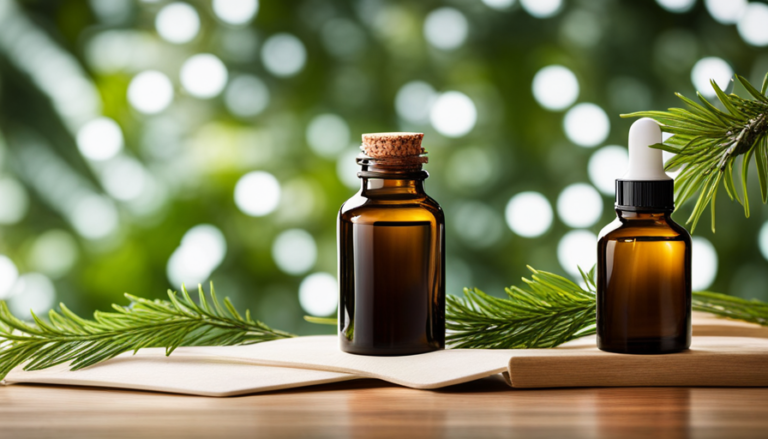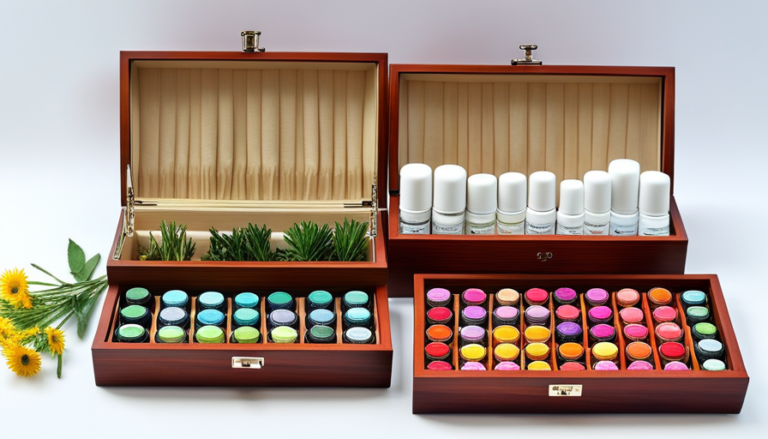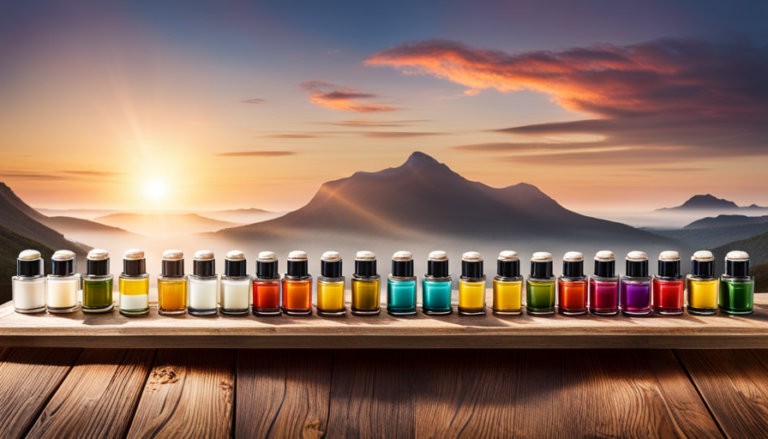How Many Drops In An Ounce Of Essential Oil

Are you ready to dive into the world of essential oils? Brace yourself, because we’re about to unravel the enigma of how many drops are in an ounce of this aromatic elixir.
Get ready to have your mind blown as we uncover the exact conversion rate and reveal some nifty tips for accurate measurement.
Whether you’re a seasoned enthusiast or just starting out, understanding this essential oil math will empower you to create your own signature blends with precision and confidence.
Let’s get started!
Key Takeaways
- Approximately 600 drops in one fluid ounce of essential oil
- Precise measurement is crucial for desired outcomes
- Recommended to use a dropper or pipette for accuracy
- Viscosity and temperature changes can affect drop sizes and accuracy of measurement
Understand the Conversion Rate
You need to understand the conversion rate to know how many drops are in an ounce of essential oil. The conversion rate explanation is simple: there are approximately 600 drops in one fluid ounce of essential oil.
This means that if you have a recipe calling for half an ounce of essential oil, you would need about 300 drops.
Measuring essential oil accurately is crucial when making homemade beauty products or aromatherapy blends. Using too much or too little can affect the desired outcome and effectiveness.
To ensure precise measurement, it is recommended to use a dropper or pipette. These tools allow you to control the number of drops added, giving you more accuracy in your measurements.
Transitioning into the next section about using a dropper or pipette will help guarantee accurate results without any guesswork involved.
Use a Dropper or Pipette for Accurate Measurement
To ensure accurate measurement, use a dropper or pipette when handling essential oils. These tools are designed for precision measurement and allow you to carefully control the amount of oil you are dispensing. Unlike other alternative measuring methods, such as pouring directly from the bottle or using a teaspoon, a dropper or pipette provides more precise results. This is especially important when working with potent essential oils, as even small variations can significantly impact the desired effects.
By utilizing these instruments, you can ensure that each drop is accurately measured, allowing for consistent and reliable usage.
Now that we understand the importance of using a dropper or pipette for precision measurement, let’s consider the viscosity of the essential oil in order to further enhance our understanding.
Consider the Viscosity of the Essential Oil
When considering the viscosity of the essential oil, it is important to understand how it affects the accuracy of measurement. Viscosity refers to the thickness or consistency of a liquid, and it plays a significant role in determining how easily the oil can be dispensed using a dropper or pipette.
Oils with higher viscosities tend to be thicker and flow more slowly, making it harder to control the number of drops released. On the other hand, oils with lower viscosities are thinner and flow more freely, allowing for easier and more precise measurement.
Additionally, it is crucial to consider that viscosity can also be influenced by temperature changes. Higher temperatures can reduce viscosity, causing oils to become less thick and potentially altering their drop sizes.
With this understanding of viscosity measurement and its impact on accuracy, you can now move on to keeping in mind different dropper sizes as you continue your essential oil journey.
Keep in Mind Different Dropper Sizes
Considering different dropper sizes is important when measuring essential oils. To ensure accurate measurement, it is crucial to use the right dropper size for the specific oil you are working with. Dropper sizes can vary, and using the wrong size may result in inaccurate measurements.
When selecting a dropper, keep in mind that they come in various sizes such as 1ml, 2ml, or even larger capacities. It’s essential to choose a dropper that matches the viscosity of your essential oil. Thicker oils may require a larger dropper to accommodate their consistency.
Additionally, some droppers have different shapes and designs that can affect the drop size. For example, certain droppers have wider openings which may result in larger drops compared to those with narrower openings.
Remember that drops can vary in size depending on the essential oil. Taking into account these differences will help you achieve precise measurements and ensure the proper use of your valuable oils.
Remember that Drops can Vary in Size Depending on the Essential Oil
Keep in mind that the size of drops may differ depending on the specific oil. This is an important factor to consider when measuring out your essential oils for various uses.
The accuracy of your measurements and the consistency of your dosage can greatly affect the effectiveness and safety of using essential oils. Different oils have different viscosities, meaning some may be thicker or thinner than others. Thicker oils tend to produce larger drops, while thinner ones produce smaller drops.
It’s crucial to be aware of this variation in drop sizes to ensure you are getting the desired amount of oil for each application. To maintain measurement accuracy and dosage consistency, it is recommended to use a standardized dropper or a pipette for precise control over your essential oil drops.
Conclusion
So now you know how many drops are in an ounce of essential oil. By understanding the conversion rate and using a dropper or pipette for accurate measurement, you can confidently use your oils in various applications.
Remember to consider the viscosity of the oil and keep in mind different dropper sizes for more precise measurements. And don’t forget that drops can vary in size depending on the essential oil.
For example, let’s say you’re blending a calming lavender oil with a carrier oil for a relaxing massage. Knowing the proper drop-to-ounce ratio ensures that you achieve the perfect balance for optimal results.






